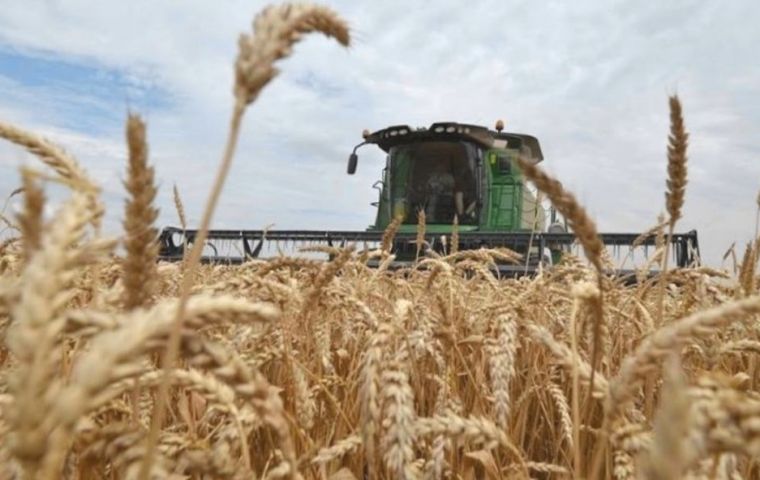MercoPress. South Atlantic News Agency
Brazil planning to become a net exporter of wheat, harvesting a volume similar to that of Argentina
 Brazil normally imports more than 50% of the wheat it consumes, mainly from Argentina
Brazil normally imports more than 50% of the wheat it consumes, mainly from Argentina Brazil is working to reduce its dependence on foreign produce and hopes to take advantage of recent record exports to increase crops this year. In effect from December 2021 to March 2022, Brazil exported some 2.5 million tons of wheat, an unprecedented volume that benefited from a historically large harvest and, more recently, from additional demand generated by the war between wheat exporters Ukraine and Russia.
Farm lobbies in Brazil believe that in effect wheat could follow the path of corn, which gained room in the country after consolidating itself as an export product.
“The expansion of any commodity occurs via exports and not domestic consumption. That was the case with soybeans, corn, coffee, and sugarcane in Brazil. Therefore, only exports will lead to a growth in the domestic production of wheat,” said Luiz Pacheco from the T&F consultancy.
In the last decade to 2020, corn exports from Brazil increased more than threefold to around 35 million tons, while production has nearly doubled over the same period to over 100 million tons.
Brazil normally imports more than 50% of the wheat it consumes, mainly from Argentina. Given this context, the country has enough room to more than double the product’s crop area, which currently only reaches 2.47 million hectares. By doing that, the country could become self-sufficient and produce 12.7 million tons of wheat.
The project only takes into consideration the state of Rio Grande do Sul, which plants more than 6 million hectares of soybeans in the summer and only 1.16 million hectares during winter, mainly wheat, said Embrapa Trigo analyst Oswaldo Vieira.
Vieira believes farmers are prepared and adds that the port the Port of Rio Grande (RS) has idle capacity between the end and the beginning of the year. Therefore, the wheat crop from Rio Grande do Sul could enter the international market before the Argentine harvest.
Vieira, who participated in the elaboration of the plan that is currently being updated before being delivered to the government by the Brazilian Wheat Industry Association (Abitrigo), said that Rio Grande do Sul farmers already had the necessary agronomic conditions to expand planting. Now, they have the right prices too.
According to T&F consultants, if Rio Grande do Sul had a second wheat crop in the area dedicated in summer to soybeans, it could have a cereal harvest of around 17 million tons, close to that of Argentina.
Wheat hit 14-year highs on the Chicago Stock Exchange because of the lower Eastern European supplies since the war began.
Vieira points out that many consulting firms have argued that the planted area could grow by around 30% this year in Rio Grande do Sul, considering that nearly 600,000 tons have already been sold in advance.
And when it comes to costs, there is margin for a competitive crop despite the increase in inputs. “Because the soybean harvest was poor, there is a large amount of fertilizer in the soil to service the wheat crop.”




Top Comments
Disclaimer & comment rulesCommenting for this story is now closed.
If you have a Facebook account, become a fan and comment on our Facebook Page!